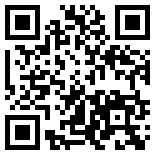深圳漢普森英語(yǔ)分享日常英語(yǔ)口語(yǔ)大全,,通過(guò)英語(yǔ)口語(yǔ)對(duì)話能夠在潛移默化中提高英語(yǔ)口語(yǔ),,同時(shí)也適用于增加英語(yǔ)詞匯量,。深圳漢普森英語(yǔ)選取了生活中容易出現(xiàn)麻煩的場(chǎng)景,,向大家介紹簡(jiǎn)單實(shí)用的生活英語(yǔ)。本篇是:英語(yǔ)購(gòu)物常用口語(yǔ)對(duì)話,。 Mr. Smith is interested in antiques. His accompany brings him to Chinese curio shops. 史密斯先生對(duì)古董很感興趣,,陪同人員帶他去中國(guó)古董店。 想要熟悉英語(yǔ)購(gòu)物常用口語(yǔ)對(duì)話,,基本的是需要掌握一些關(guān)鍵的句型,,深圳漢普森英語(yǔ)小編為大家整理了一些英語(yǔ)購(gòu)物常用口語(yǔ)對(duì)話的句子,幫助大家先做口語(yǔ)對(duì)話前的熱身,。 A: Mr. Smith, what are you going to do this afternoon? B: I don't have any plans. Do you have some suggestions? A: If you are interested in Chinese Culture, I can show you around are many Chinese curio shops. They mainly sell antiques and Chinese paintings there. B: Why don't we go now? A: OK. Let's go. B: They are all beautiful. Are they genuine? A: I don't think so. They are reproductions. B: Look at the ivory horse! It is so vivid. How much is it? A: It is marked RMB200. B: It's so cheap. I will take it. A: There are some landscape paintings, figure paintings and flower-bird you like to go there? B: OK. I'd like a flower-bird painting. A: How about this picture of cranes with pine trees? In China, cranes and pine trees symbolize longevity. B: It's very beautiful. A: I will buy it for you as a welcoming gift. 對(duì)英語(yǔ)千萬(wàn)不要一知半解的,,深圳漢普森英語(yǔ)小編為您整理英語(yǔ)購(gòu)物常用口語(yǔ)對(duì)話的翻譯,幫助大家理解消化,,徹底掌握該對(duì)話的精髓,。 A:史密斯先生,您今天下午有安排嗎,? B:沒(méi)有什么計(jì)劃,,你有什么建議嗎? A:如果您對(duì)中國(guó)文化感興趣,,我可以帶您到琉璃廠逛逛,,那兒有許多中國(guó)古董店,主要經(jīng)營(yíng)中國(guó)古董和字畫(huà),。 B:我們?yōu)槭裁床滑F(xiàn)在就去呢,? A:好的,我們走吧,。 B:它們都太美了,,是真品嗎? A:不是,,都是膺品,。 B:您看那匹象牙馬!太逼真了,,多少錢(qián)?。? A:標(biāo)價(jià)是兩百元,。 B:太便宜了,,我要買(mǎi)這個(gè)。 A:那邊有許多的山水畫(huà)、人物畫(huà)和花鳥(niǎo)畫(huà),,您要過(guò)去看一下嗎,? B:我想買(mǎi)一幅花鳥(niǎo)畫(huà)。 A:您看這幅松鶴圖如何,?在中國(guó),,仙鶴與松樹(shù)都是長(zhǎng)壽的象征。 B:很美,。 A:我把它買(mǎi)下來(lái)送給您吧,,就當(dāng)是歡迎您的禮物。 以上就是深圳漢普森英語(yǔ)小編為您整理的英語(yǔ)購(gòu)物常用口語(yǔ)對(duì)話,,建議大家多學(xué)多練,,以增進(jìn)英語(yǔ)口語(yǔ)能力為目標(biāo)
愛(ài)品網(wǎng) IPNO.CN
b2b免費(fèi)推廣平臺(tái)
掃掃有驚喜



